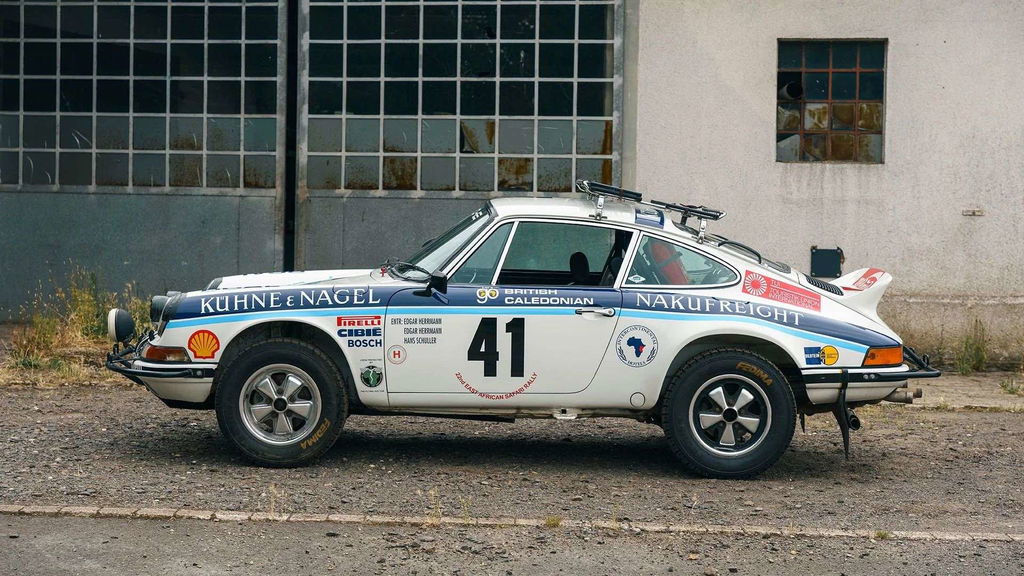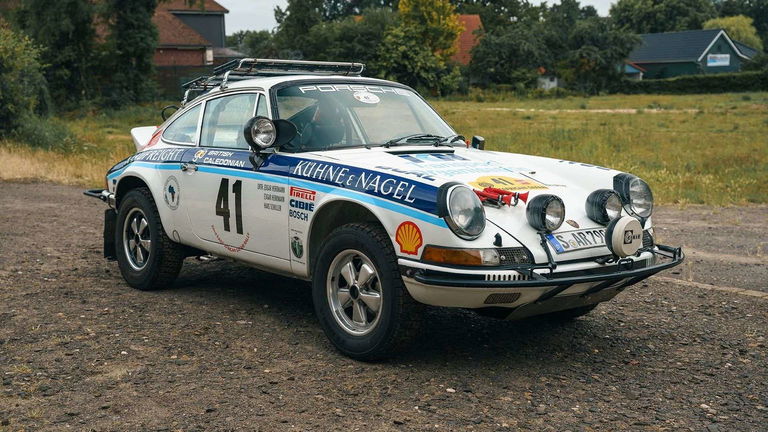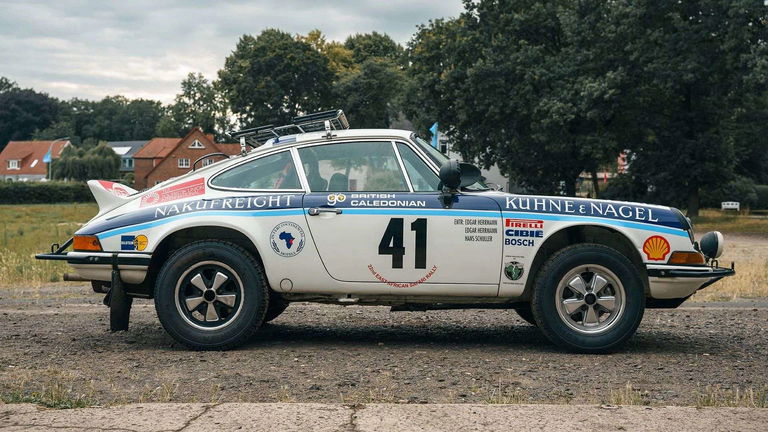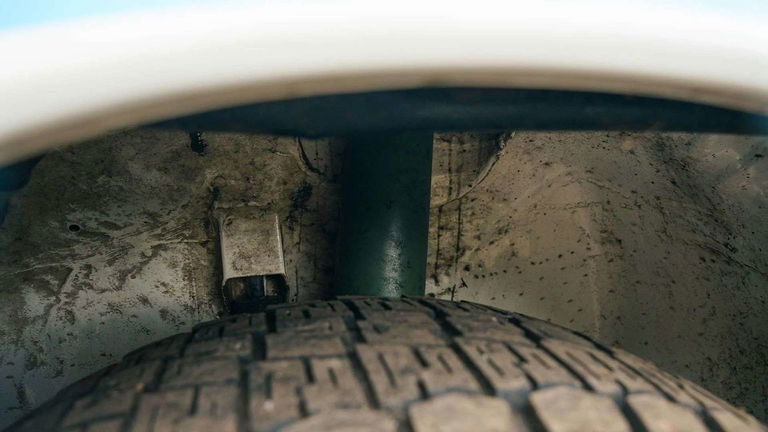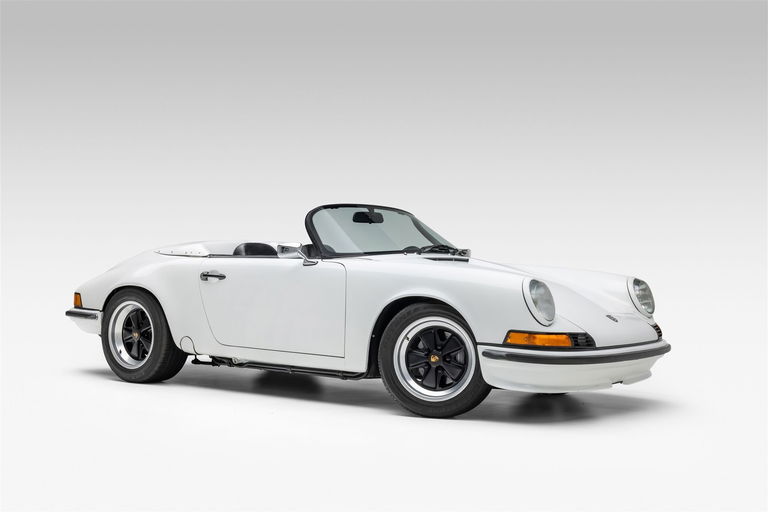Every 1973 Porsche 911 Carrera RS 2.7 is a special car. It is the halo car of many important Porsche collections or often the representative Porsche sought to complete a well-rounded collection of vintage sports cars. Of the first 500 first-series cars built to homologate the RS for the FIA’s Group 4 (Special GT), Porsche committed to building 130 to M471 “Sport” specification commonly known as Lightweights, which, in Porsche’s words were, “Conceived for customer racing but also suitable for the road.” Among the M471 Lightweight conversion modifications made to the stripped-out homologation spec was a passenger seat with a headrest, a glovebox door, 7×15 in Fuchs wheels at the rear (instead of 6×15 in), torsion bar covers, partial undercoating, and anti-roll bars.
1973
Built as a first series M471 Lightweight, 911 Carrera RS 2.7 No. 285 was completed in December of 1972 and finished in Grand Prix White with Red Carrera side stripes. Unlike most of the 1580 Carrera 2.7s built this was not to be its final form. Designated as a factory-owned “Händler Nr. 100” it was just one of 25 RS 2.7 and RSR 2.8 kept by the factory as this Carrera RS, along with its sister car No. 288, was brought to the racing department for modifications to further convert this already special Lightweight Carrera RS into a factory rally car for the 1973 East African Safari.
A thirst for adventure may be the best way to describe Porsche’s early efforts in preparing factory 911s for competition in Kenya and Tanzania. While the circuit racing program in Europe was less expensive and technically more applicable to their road cars, the Safari was the most important rally that Porsche had not yet won. Modifications to both cars were substantial. The ride height was raised for a total ground clearance of 250 mm. Steel bumpers were installed during normal production with additional ram bars added. Chassis reinforcements were welded in, heavier-duty shock absorbers were specified, both cars received aluminum skid plates, and a larger, competition-spec 110-liter fuel tank. Finally, the exterior featured “spectator handles” above the rear quarter windows (to allow for those by the roadside to assist if needed), additional forward hood lighting, hood-mounted horns, and matte black graphics similar to the three 911 STs that competed in Africa in 1971. Securing sponsorship from Bosch, both cars, along with a third works-prepared RS entered for a British team, were painted yellow, liveried, loaded with rally equipment (ropes, shovels, winches, and spare parts), and sent to Nairobi with a small crew of mechanics. Service vehicles were secured locally. Like many teams, Porsche found itself underprepared for the perilous muddy African roads. Björn Waldegård and Hans Thorszelius suffered through a start-stop rally. Just three hours from the finish after 5,300 km, chassis number 285, wearing start number 10 and Stuttgart plate “S-AR 7909”, suffered engine issues from a loosened oil pipe on a particularly fast section, resulting in a DNF. The Porsche Safari team returned to Stuttgart disappointed but not ready to throw in the towel.
Still painted yellow with Bosch sponsorship and retaining its S-AR 7909 plate, chassis number 285 was sent north to compete in the 1,000 Lakes Rally, the only other factory rally entry that year and a sharp contrast to the mud and heat of springtime Africa. Deemed to be in better condition than 288 after the Safari, chassis number 285 was fitted with a new suspension setup to handle the large jumps and gravelly forest stages of Finland with the forward-thinking Porsche team using this as a development opportunity to trial this uprated suspension for their return to Africa in 1974. Porsche Local Finnish ace and former Porsche factory driver Leo Kinnunen with start number 3 won a remarkable 20 of the 43 special stages over three days in early August finishing 3rd overall — a very respectable finish for the car after its hard luck in Africa.
1974
Still reeling from their disappointment of 1973, Porsche invested additional resources for both factory 1974 East African Safari entries for 1974. Preparations began in earnest for the very same cars that ran in 1973. The Achilles Heels of the previous year (shocks and transmissions) were rectified. Both factory cars were reliveried, this time in the fetching white and blue colors of German logistics company Kühne & Nagel. While Björn Waldegård / Hans Thorszelius returned in 1974 they piloted the sister car No. 288. Two-time Safari winner Edgar Herrmann and co-driver Hans Schuller manned No. 285, now wearing start number 41. It had been especially wet that year and with the rain, once again came the mud. The rally organizers were forced to cancel a particularly muddy stage where 72 of the 99 teams became stuck. In fact, with a Fiat team stuck in the mud and blocking the road, Herrmann and Schuller went to assist and had their open car raided of maps, stage notes, and licenses, all of which were gone when they returned. Familiar with the course, they continued on until a front spindle failure took them out of the running. It was not all bad news for the team as the sister car finished second, Porsche’s best finish yet in what was considered one of the most difficult rallies on Earth. Interestingly, Porsche returned to Stuttgart with the 2nd place finisher but elected to sell the stranded 285 to a local enthusiast.
1974 — 2005
Registered with the Kenyan authorities in 1975 it was reportedly rallied across Kenya and Tanzania for a number of years. Later this RS Lightweight received red paint and was spotted wearing a Kenyan-issued license plate “KPU 539”. Remarkably, to this day, it retains both its Kenyan license plate and its original title document issued in 1975. It was later acquired in 1992 by Surinder Thatthi, a former rally champion co-driver and FIA World Motor Sport Council representative. While owned by Thatthi, the car underwent a partial restoration with a repaint in white and the intent of returning it to roadworthy condition. Eventually, curiosity got the better of Thatthi, who began researching the chassis number. In the early-2000s Gabrielle Mahler-Kurzenberger and Uwe Kurzenberger, who were the President and Secretary of the German Carrera RS Club, were contacted by a local shop about the car and quickly boarded a flight to Nairobi to bring the RS 2.7 back to Germany. What they found in Kenya was in fact chassis number 285, yet the body had deteriorated and it had suffered from a seized engine. Undeterred, the Kurzenberger’s entrusted their factory rally restoration project to Eckhard Spreng just outside of Ludwigsburg, with the RS Lightweight returning to Germany for the first time in a quarter-century. The Lightweight was with Spreng for three years for a full restoration where no aspect was overlooked to not only return it to the road but also the condition required to enter into vintage rallies across Germany. With an edict to retain as much originality as possible, Spreng went to work disassembling and stripping the RS to bare metal, restoring the reinforced unibody, and many of the custom rally modifications that it left the factory with. Notably, many of its original rally features were still intact, including its original reinforced body parts. It was mechanically sorted by Manfred Rugen as well, with a completely new 2.7-liter engine and its transmission receiving a complete rebuild. The suspension, noted to be the same as it left Porsche upon disassembly was restored as well. The finishing touches were to return it to its Kühne & Nagel livery and start number 41 as run by Herrmann and Schuller in the 1974 East African Safari and to reregister it on its factory issued in 1973 German “S-AR 7909” license plates.
Today
In contrast to many Carrera RS restorations that lie dormant in museums or are trailered to an occasional high-level car show, the Kurzenbergers immediately returned their RS to the rally stages for which it was built. Since the mid-2000s it has participated in vintage rallies across Germany. Additionally, it was prepared for an event Porsche could not have predicted it would be used for in 1973 — the Kurzenberger’s wedding! Unique wedding transport to be sure, but one ideally suiting the interests of the newly married couple. In 2009 none other than Björn Waldegård returned to the wheel to compete in the car he raced across Africa 36 years earlier. Incredibly, Hans Schuller has also been reunited with number 285 in recent years as well. Placed In storage with the well-known Rugen Motoren GmbH & Co KG of Hepstedt, Germany for the past six years, the car has recently been awakened. To prepare it for sale the Kurzenbergers have conducted an oil change service and fresh German TÜV inspection. While the motoring world may have more than its fair share of rally 911 clones and tributes, a Porsche factory-built works rally car is truly something special. This particular example shines not only due to its noble beginnings as an M471 RS 2.7 Lightweight, but for its off-the-continent trial by fire, the return from its adopted homeland, its fine restoration, and its continued use in one of the world’s finest forms of motorsport, international rallying.


